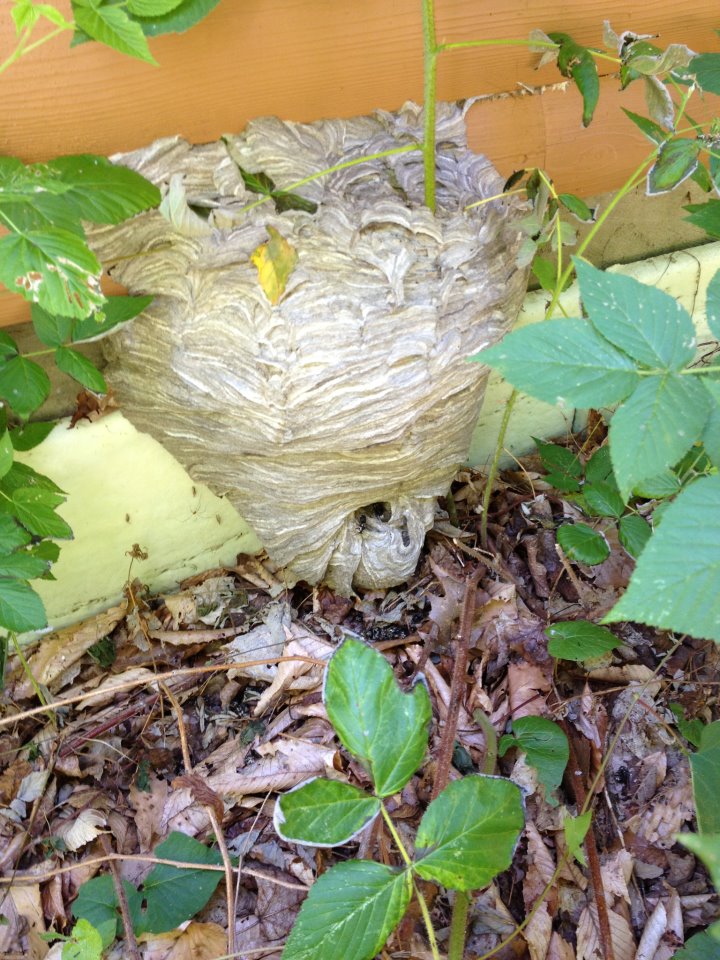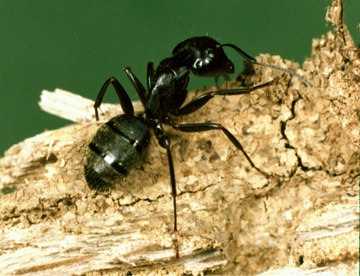
Yellow Jackets
What many confuses as “bee stings” are actually stings from yellow jackets. Yellow jackets are the most aggressive of the stinging insects and typically nest underground. If you notice flying insects coming from an underground burrow, it is most likely yellow jackets and should be taken care of by a professional. Colonies can contain thousands of yellow jackets and can be easily provoked. Yellow jackets can also sting multiple times. All of our technicians are equipped with a bee-suit and protective equipment to combat even the worst type of nests. We highly suggest avoiding yellow jacket nests and calling Hogarth’s at the first sign of an issue.
Paper Wasps and Hornets

Paper wasps and hornets also form colonies but nest above ground, unlike yellow jackets. Both can inflict extremely painful, sometimes paralyzing stings. Their nests can be commonly found under decks, steps, and railings but are also built in trees and bushes. Nests can grow from a baseball to basketball-size in just days. Most customers aren’t even aware they have a nest until being stung. We suggest carefully inspecting areas around your home where paper wasps and hornets are likely to nest, especially if you have small children or pets.
Bees
Bumblebees are usually easy to distinguish based on their larger size. Their colonies are much smaller than other stinging insects, usually with only 100 individuals. Like yellow jackets, bumblebees can sting multiple times.
Honeybees are the gentlest type of stinging insect and typically nest in hollowed out trees or in homes where there is some type of cavity or opening. Honeybees only sting as a last resort, usually sacrificing their life to protect their colony. When it stings, the stinger rips from its body and the bee dies. We do not want to harm honeybees and instead refer clients with honeybees to our local beekeeper.
Combating Stinging Insects
Prevention is key to protecting your home from unwanted stinging insects. The best method is via exterior spray on the home to prevent bees, wasps, hornets and yellow jackets from building nests on your structure. We also offer individual nest removals, but preventing nests from being re-built can only be done by treating the home. We strongly suggest having a professional take care of these issues as they can be dangerous and can cause further issues if not handled properly.
Call Hogarth’s with all of your stinging insect needs, and be sure to prevent problems before they occur!

